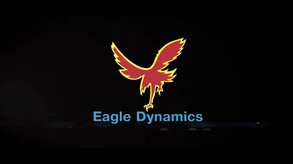스팀 최근 평가
없음
스팀 모든 평가
스팀앱 평가
게임 번호
411920
출시일
2017년 9월 22일
개발
Eagle Dynamics SA
유통
Eagle Dynamics SA
언어
영어*, 독일어, 스페인어 - 스페인, 러시아어, 체코어, 프랑스어, 중국어 간체
*음성이 지원되는 언어
*음성이 지원되는 언어
플랫폼
장르
2. 가격 (KRW)
갱신:
1년 전
원가:
₩ 60,720
세일:
-
판매가:
₩ 60,720
6. 게임 소개
6.1 동영상
6.2 소개
The British Spitfire is one of the most iconic fighter aircraft of World War II. Most famous for its role in the Battle of Britain, the Spitfire served as Britain's primary fighter during the entirety of the war. The Spitfire combines graceful lines, eye-watering dogfight performance, and heavy firepower in its later variants. For DCS World, we are happy to bring you the most accurate and realistic simulation of the Spitfire LF Mk IX ever created.
The Spitfire Mk IX was originally developed as a stopgap measure as a response to the appearance of the Focke-Wulf FW 190A.
The Spitfire IX is powered by the Merlin 66. This engine produces its best performance at slightly lower altitudes than the older Merlin 61. Spitfires equipped with this engine were designated LF Mk IX. This was the most numerous version of the Mk IX, with 4,010 produced. The majority of Mk IXs of all types used the standard "c" wing, which would often carry two 20mm cannon and four .303in machine guns.
The Mk IX was a significant improvement on the Mk V. It had a top speed of 409 mph at 28,000 feet, an increase of 40 miles per hour. Its service ceiling rose from 36,200 feet to 43,000 feet. It could climb at 4,000 feet per minute. In July 1942, an early Mk IX was flown against a captured Fw 190A, and the two aircraft were discovered to have very similar capabilities. The RAF had its answer to the Fw 190 problem.
The Mk IX replaced the Mk V from June 1942. It allowed the RAF to go back onto the offensive in occupied Europe, and resume the "circus", "ramrod" and "rodeo" raids. Its first combat success came on 30 July 1942, when a Spitfire Mk IX shot down a Fw 190. Amongst other notable achievements, the Mk IX took part in the highest altitude combat of the Second World War, when it intercepted a Ju 86R at 43,000 feet over Southampton on 12 September 1942. On 5 October 1944 Spitfire Mk IXs of 401 Squadron were the first allied aircraft to shoot down an Me 262 Jet. The Mk IX remained in service until the end of the war, even after the appearance of the Griffon powered Mk XIV.
The Spitfire Mk IX was originally developed as a stopgap measure as a response to the appearance of the Focke-Wulf FW 190A.
The Spitfire IX is powered by the Merlin 66. This engine produces its best performance at slightly lower altitudes than the older Merlin 61. Spitfires equipped with this engine were designated LF Mk IX. This was the most numerous version of the Mk IX, with 4,010 produced. The majority of Mk IXs of all types used the standard "c" wing, which would often carry two 20mm cannon and four .303in machine guns.
The Mk IX was a significant improvement on the Mk V. It had a top speed of 409 mph at 28,000 feet, an increase of 40 miles per hour. Its service ceiling rose from 36,200 feet to 43,000 feet. It could climb at 4,000 feet per minute. In July 1942, an early Mk IX was flown against a captured Fw 190A, and the two aircraft were discovered to have very similar capabilities. The RAF had its answer to the Fw 190 problem.
The Mk IX replaced the Mk V from June 1942. It allowed the RAF to go back onto the offensive in occupied Europe, and resume the "circus", "ramrod" and "rodeo" raids. Its first combat success came on 30 July 1942, when a Spitfire Mk IX shot down a Fw 190. Amongst other notable achievements, the Mk IX took part in the highest altitude combat of the Second World War, when it intercepted a Ju 86R at 43,000 feet over Southampton on 12 September 1942. On 5 October 1944 Spitfire Mk IXs of 401 Squadron were the first allied aircraft to shoot down an Me 262 Jet. The Mk IX remained in service until the end of the war, even after the appearance of the Griffon powered Mk XIV.

